The Aruch Hashulchan, the monumental work of Rav Yechiel Michel Halevi Epstein, occupies a prominent place in the library of classic Jewish texts. Almost every contemporary halachic sefer cites the Aruch Hashulchan and contends with his opinions, testifying to the esteem in which this exceptional work is held. The original eight volumes encompassing all four sections of Shulchan Aruch were composed between 1870 and 1901. The Aruch Hashulchan was immediately acclaimed by the Torah scholars of the day and remains a standard in halachic literature.
With remarkable clarity, scope, and skill, the Aruch Hashulchan incorporates many different facets of halachic study. Relevant sources from the Gemara, Rambam, and Rishonim are explained and difficulties resolved with novel, straightforward explanations. He reports the rulings of the Shulchan Aruch and the Rema, as well as those of the Magen Avraham, Taz, and other classical commentaries, sometimes challenging their opinions. This masterful compendium of Jewish law also addresses practical halachic issues as well as relating to prevalent customs of the time.
For this new edition, the full Hebrew text and all sources were carefully reviewed. Obvious typographical and citation errors were corrected, and supplementary references were added.
The accompanying English translation is faithful to the Hebrew text with occasional clarifications, footnotes, and subheadings added to enhance readability.
About the Author
Rav Yechiel Michel Halevi Epstein (1829–1908) was one of the leading poskim of his day. His acumen in analyzing and expounding halachah established him as an authority of Jewish law, and his work, Aruch Hashulchan, as a timeless classic. Born into a wealthy merchant family, he chose a path of Torah study that led him to the great Yeshivah of Volozhin, where he developed a close relationship with the Netziv, later marrying his sister. One year after his marriage, Rav Epstein returned to his hometown, Bobroisk, where he received his semichah, studying under Rav Eliyahu Goldberg. He began teaching a shiur and soon became rosh yeshivah of the local Altshul Yeshivah and a dayan on the local Beit Din. At the age of 35, he assumed his first rabbinic post in Novozybkov, and there he wrote his first book, Ohr Layesharim.
In 1874, after ten productive years, Rav Epstein left to become the Rav of Novardok, leading the community for thirty-four years until the end of his life. In an article published in Halevanon newspaper at that time, he is welcomed as “Harav Hagaon, proficient in all areas of Torah in theory and practice, wise of heart and mighty in the battle of Torah, crowned with intellectual prowess and the finest qualities and conduct, pleasing in both preaching and practice.”
Rav Epstein saw the Rabbi’s role of studying and disseminating Torah, guiding his community, and upholding religious standards as paramount. Backed by his authoritative command of halachah, he would extend himself to rule leniently where appropriate. Yet he stood steadfast and uncompromisingly against any attempt to change accepted customs and traditions.
Recognized as a great halachic authority, many students sought his tutelage. Among the Rabbis he ordained are leading figures of the following generation, including Rav Isser Zalman Meltzer, Rav Avraham Yitzchak Hakohen Kook, Rav Yechezkel Abramsky, Rav Shlomo Yosef Zevin, Rav Yosef Eliyahu Henkin, and Rav Yosef Shlomo Kahaneman.
About the Editor
Rav Ilan Segal has been studying and teaching halachah for over thirty years. Originally from Cape Town, South Africa, he studied in Netivot Yosef and Heichal Hatorah yeshivas in Eretz Yisrael. After receiving semichah from the Chief Rabbis of Israel, Rav Avraham Shapira and Rav Mordechai Eliyahu, Rav Segal served as the Rabbi of Pretoria, South Africa, for four years. Returning to Israel in 1994, he devoted himself to Torah education, teaching in Yeshivat Reishit Yerushalayim and Darchei Binah seminary, and later as the principal of Afikei Torah and Levavi seminaries. He has contributed to the English Mishnah Berurah, the Emunah in the Classroom series, and other Torah publications as a writer, translator, and editor. Rav Segal and his family live in Yerushalayim, where he divides his time between learning in kollel, teaching, and working on the English edition of the Aruch Hashulchan.
Praise for Aruch Hashulchan in English:
I have read portions of the English rendition of the Aruch HaShulchan on Hilchos Shabbos by my esteemed friend and colleague Rabbi Ilan Segal.
Although the Aruch HaShulchan obviously does not need my approbation, I however wish to relate that I found Rabbi Segal’s translation meticulously true to the Aruch HaShulchan’s wording and intent. The translation is professionally rendered constituting both a Kiddush Hashem that a Talmid Chochom as Rabbi Segal is capable of such a command of English and also an honor to the Aruch HaShulchan.
I commend Rabbi Segal for a quality presentation that will enable those to whom the original Hebrew is difficult to be able to delve into the Halacha in the intricate manner the Aruch HaShulchan presents, and thereby gain a greater and more in depth appreciation of Hilchos Shabbos, as well as a deeper understanding of how Halacha in general is established.
I pray that Hashem blesses Rabbi Segal and his family with life, health and the wherewithal to continue to merit the community in his many and varied ways.
Sincerely,
With Torah blessings,
Rabbi Zev Leff

